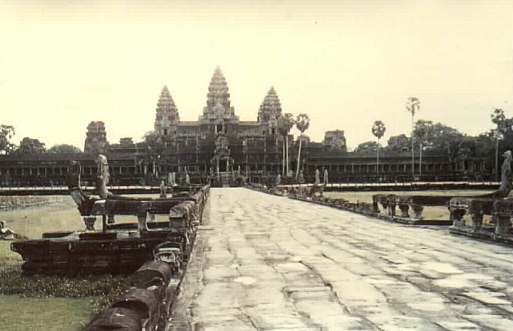JOURNAL OF MY TOUR BY JEEP OF THAILAND, CAMBODIA AND VIETNAM
NOVEMBER, 1956 , page17Giant snakes slither and slide through the battefield entangling and suffocating elephants trumpeting to their last breath. Garudas fly around with archers perched on their backs spreading dire death and destruction amongst the troops below. The invulnerability of some of the Princes is very realistically depicted by the deviations in the trajectories of the swarms of arrows released by wicked adversaries attempting to shoot them. The unperturbed faces of the Princes clearly indicate that they have gone into a magic trance and have mentally withdrawn from the battlefield.
The "Ramayana" and "Mahabharata"
are the unendless source of inspiration for these scenes. Although both books contain tens of thousands of verses, an anthology is very worth while reading. The palaces in Bangkok and Phnom Penh both contain murals which gain tremendously in value and understanding if one knows at least the main features of the legends.
A very charming aspect of the Angkor scenes is the way in which the artists intersperse and depict everyday scenes as if they are fed up just sticking to the routine of depicting high-valuted Royalty and Deities. That way, the artists form a bridge to the Present since some scenes of 800 years ago or older are similar to those still seen today. The musty smell in the galleries deriving from the millions of bats who have taken up residence here soon drove me back to the entrance, where at last I caught some fresh air. While continuing eastward and passing through the gate where the galleries converge, I was surprised by what must be one of the most beautiful views in the world:
| the silhouette of the temple with its mighty towers, somber and mysterious and infinitely impressive. |
 |
Especially towards dusk, this is an unforgettable scene: at the end of a 10 m wide and 350 m long stone causeway, lies the Angkor complex |
BLO fecit 20010816 --- next page ---contents autobiography